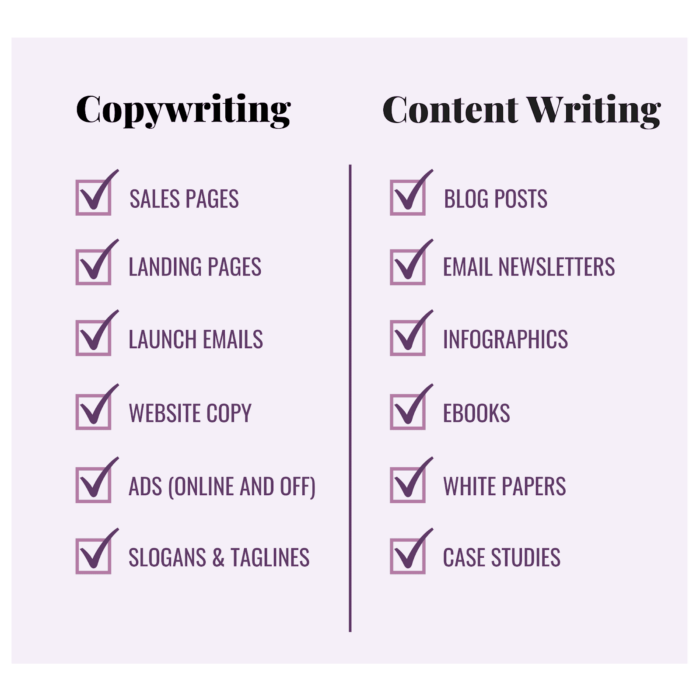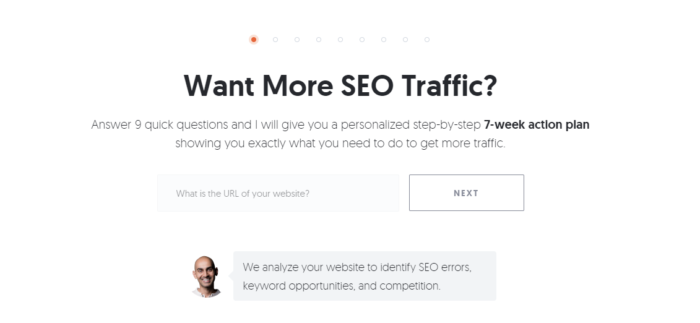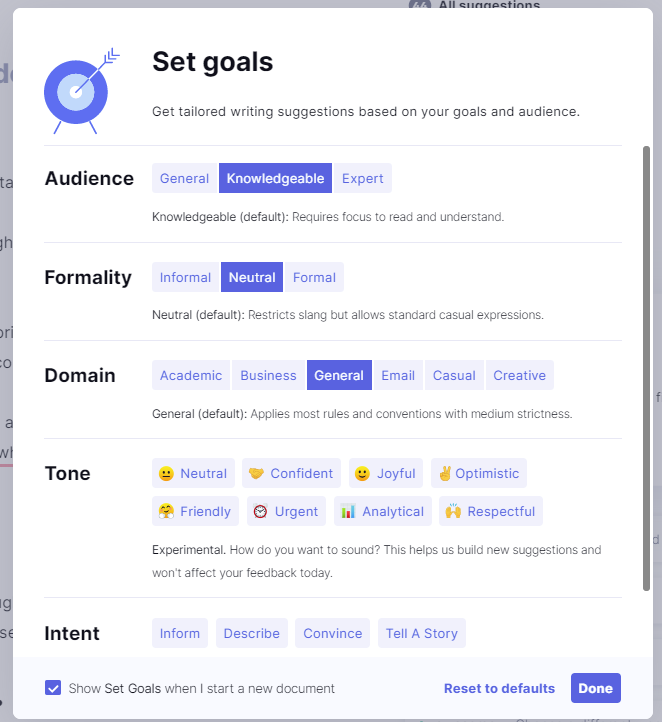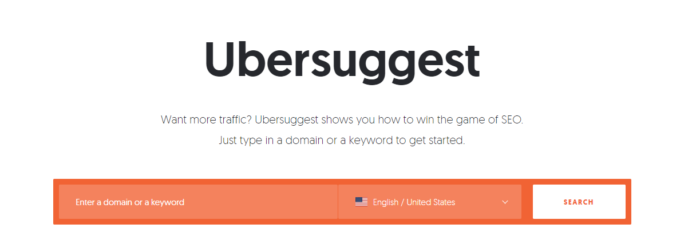
What Is the Difference Between Copywriting vs Content Writing?
Have you been using these two interchangeably? You’re doing your business a disservice.
Copywriting and content writing are two very different skill sets, but both are essential for a successful marketing strategy.
Copywriters are responsible for creating effective copy—the text on your website that converts browsers into buyers. These are the words you see in digital ads, billboards, emails, and more.
Content writers, on the other hand, create valuable content that engages and informs your audience. Long and short form blogs, ebooks, and whitepapers are often written by content writers.
So what is the difference between copywriting and content writing? Let’s take a closer look.
The Basics on Copywriting vs. Content Writing
Understanding the basics of copywriting vs. content writing is the first step in determining which will best fit your business needs.
Copywriting is all about persuasion. Copywriters are experts at using words to get people to take a desired action—whether that’s purchasing an item, signing up for an email list, or downloading an ebook.
Copywriting is often written in shorter form, making more of an impact in fewer words. Additionally, copywriting often has a shorter life , being used for a specific campaign or goal.
This ad from Yeti is an example of copywriting. It’s short, succinct, and has a strong message that speaks directly to its target audience.
Content writing is more about education and building relationships. Content writers produce content to help readers better understand a topic, solve a problem, or make a decision.
Content writing is most often in blog form, meaning it’s at least 500 words, with the ideal length ranging from 2,100 to 2,400 words. It has a longer life, often finding a permanent home on the blog or resource page of a website.
The above example is one of my posts from the Neil Patel blog. This is one of the most recognized forms of content writing, with 7.5 million blog posts published every day. This particular piece was written to help marketers understand how Google’s Featured Snippets work and the best ways to rank for them.
When you think of content writing and copywriting, what images come to mind? We often remember copywriting because of its use in ads and content writing when we’ve learned something from an article.
The goals of these two types of writing differ quite a bit, often changing the intent of the words. The copywriter’s ultimate goal is to get the reader to take action, while the content writer’s goal is to build trust and credibility with the reader.
Which is Better for Your Business: Copywriting or Content Writing?
The answer to this question depends on your business goals.
If you want to increase sales or get more leads, copywriting is the way to go. If you want to build relationships with your audience and establish yourself as a thought leader in your industry, then content writing is the better option.
Both copywriting and content writing are important for a successful marketing strategy. Don’t worry, we’ll dive into that later in the article.
Great writing is the foundation of both copywriting and content writing. The key is to figure out which one will help you achieve your specific business goals.
The Skills Behind Content Writing vs Copywriting
The skills required for copywriting and content writing are quite different.
Copywriters need to be experts at persuasion, sales, and marketing. They need to understand human psychology and be able to use words to influence reader emotions and drive them to take action. Learn more about how to write compelling copy with my guide to copywriting.
Some of the common types of writing copywriters create include:
- SEO copy
- Ad copy
- Email campaigns
- Landing page copy
- Web page copy
- Video scripts
- Billboards
- Direct mailers
- Social media

Content writers need to be able to write well and do extensive research. They also need to be experts at creating content that is valuable and informative without being too salesy.
Some of the common types of writing content writers create include:
- Articles
- Blog posts
- Press releases
- White papers
- Newsletters
- Podcasts
- Print magazines
- Ebooks
Understanding the difference between copywriting and content writing and how they address your specific business goals will ultimately help you become a more productive writer, as well as work alongside your writing teams. You’ll be able to determine what types of assets you’re in need of and create a more effective and efficient writing process.
Integrating Copywriting and Content Writing for Marketing
The best marketing strategies use both copywriting and content writing.
Copywriting is great for getting people to take action, but it can’t be used all the time. If you only use copywriting, you’ll quickly lose credibility with your audience. All they will think you are concerned about is selling things to them. This is where content writing comes in.
Content writing provides value and builds relationships with your audience. It helps you establish trust and credibility so that when you do use copywriting, people are more likely to take the desired action.
Whether you’re seeking an internet sensation with viral content or an increase in your lead conversions on your website, using copywriting and content writing together in your marketing strategy will help you achieve the best results.
For example, you can create an awesome blog post—which is content writing—that you want to share out to the world. To get the word out, you need to craft some clever social media captions—which is copywriting—to get readers interested in clicking. Combining both styles of writing will help you achieve your ultimate goal of getting more visitors on the website.
Be sure to always offer value in your content. Don’t post just to post. Nobody enjoys garbage content.
How to Find Writing Talent for Your Business
If you’re looking to add copywriting or content writing to your marketing strategy, there are a few ways to find talent.
One way is to post a job on a freelancer platform like Upwork.
When posting your job, be sure to include:
– The type of writing you need (copywriting or content writing)
– A detailed job description
– Your budget
You can also use a networking platform like LinkedIn to spread the word of your content needs. If you have connections in your industry, reach out and see if they know anyone who might be a good fit.
You can also contact a content marketing agency that specializes in copywriting and content writing. This is a great option if you need help with both copywriting and content writing but don’t have the time or resources to do it all yourself.
While you may be able to write some content yourself, writer’s block is no joke, and can act as a huge hurdle for your production, so finding talent is key. No matter which route you choose, be sure to take the time to find a writer who is a good fit for your business and your marketing goals.
FAQs
What does a copywriter do?
A copywriter is a person who writes copy, or content, for marketing purposes. Copywriters are responsible for creating ad campaigns, writing website content, and coming up with concepts for email marketing or other types of marketing collateral.
What does a content writer do?
A content writer is a person who writes content for the purpose of providing value to readers. Content writers are responsible for creating blog posts, eBooks, white papers, or other types of content that educate and inform their audience.
What’s the difference between copywriting and content writing?
The main difference between copywriting and content writing is the purpose of the content. Copywriting is written to persuade or sell, while content writing is written to educate or build relationships.
What’s the best way to use copywriting and content writing together?
The best way to use copywriting and content writing together is to use copywriting sparingly. Use it for your call-to-actions or other times when you need to get people to take action. Use content writing the majority of the time to provide value and build relationships with your audience.
Can you be a freelance copywriter?
Yes, you can be a freelance copywriter. Many copywriters are self-employed and work with different businesses on a project-by-project basis.
Can you be a freelance content writer?
Yes, you can be a freelance content writer. Similar to copywriters, many content writers are self-employed and work on a project-by-project basis as well.
What is an SEO content writer?
An SEO content writer is a type of content writer who specializes in creating content that is optimized for search engines. This includes using the right keywords and phrases, as well as following other SEO best practices.
{
“@context”: “https://schema.org”,
“@type”: “FAQPage”,
“mainEntity”: [
{
“@type”: “Question”,
“name”: “What does a copywriter do?”,
“acceptedAnswer”: {
“@type”: “Answer”,
“text”: ”
A copywriter is a person who writes copy, or content, for marketing purposes. Copywriters are responsible for creating ad campaigns, writing website content, and coming up with concepts for email marketing or other types of marketing collateral.
”
}
}
, {
“@type”: “Question”,
“name”: “What does a content writer do?”,
“acceptedAnswer”: {
“@type”: “Answer”,
“text”: ”
A content writer is a person who writes content for the purpose of providing value to readers. Content writers are responsible for creating blog posts, eBooks, white papers, or other types of content that educate and inform their audience.
”
}
}
, {
“@type”: “Question”,
“name”: “What’s the difference between copywriting and content writing?”,
“acceptedAnswer”: {
“@type”: “Answer”,
“text”: ”
The main difference between copywriting and content writing is the purpose of the content. Copywriting is written to persuade or sell, while content writing is written to educate or build relationships.
”
}
}
, {
“@type”: “Question”,
“name”: “What’s the best way to use copywriting and content writing together?”,
“acceptedAnswer”: {
“@type”: “Answer”,
“text”: ”
The best way to use copywriting and content writing together is to use copywriting sparingly. Use it for your call-to-actions or other times when you need to get people to take action. Use content writing the majority of the time to provide value and build relationships with your audience.
”
}
}
, {
“@type”: “Question”,
“name”: “Can you be a freelance copywriter?”,
“acceptedAnswer”: {
“@type”: “Answer”,
“text”: ”
Yes, you can be a freelance copywriter. Many copywriters are self-employed and work with different businesses on a project-by-project basis.
”
}
}
, {
“@type”: “Question”,
“name”: “Can you be a freelance content writer?”,
“acceptedAnswer”: {
“@type”: “Answer”,
“text”: ”
Yes, you can be a freelance content writer. Similar to copywriters, many content writers are self-employed and work on a project-by-project basis as well.
”
}
}
, {
“@type”: “Question”,
“name”: “What is an SEO content writer?”,
“acceptedAnswer”: {
“@type”: “Answer”,
“text”: ”
An SEO content writer is a type of content writer who specializes in creating content that is optimized for search engines. This includes using the right keywords and phrases, as well as following other SEO best practices.
”
}
}
]
}
Conclusion
Copywriting and content writing are two different types of writing that serve different purposes.
One is not better than the other. They are simply used for different reasons.
Copywriting is written to persuade or sell, while content writing is written to educate or build relationships. Both copywriting and content writing can be used to achieve your marketing goals, but it’s important to use them sparingly and strategically.
When in doubt, always err on the side of content writing to provide value and build relationships with your audience. And, if you need help, don’t hesitate to reach out to a content marketing expert or agency that specializes in copywriting and content writing.
How do you use copywriting and content writing in your business?
The post What Is the Difference Between Copywriting vs Content Writing? appeared first on #1 SEO FOR SMALL BUSINESSES.
The post What Is the Difference Between Copywriting vs Content Writing? appeared first on Buy It At A Bargain – Deals And Reviews.













